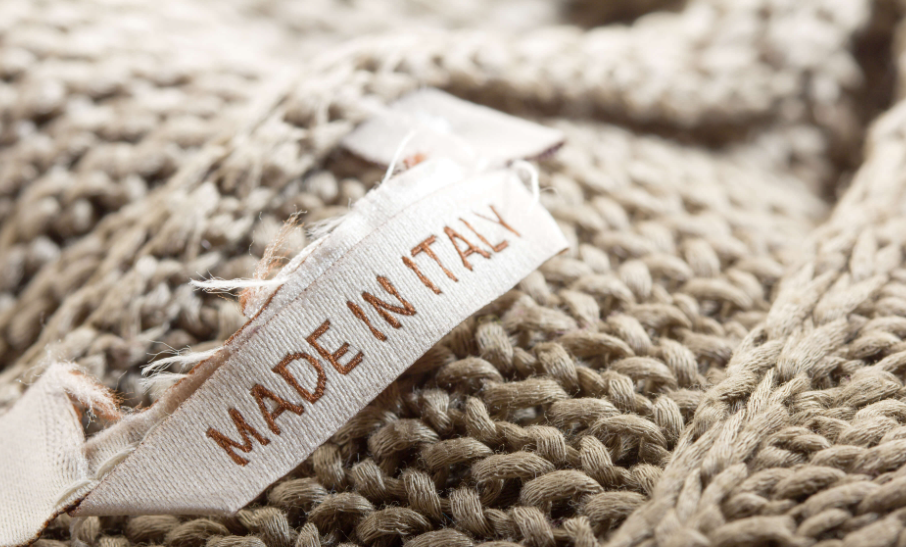At the press conference of Milan Fashion Week Women’s (Milano Fashion Week Donna) held on the morning of September 3, 2024, the Camera Nazionale della Moda Italiana and the Istituto Nazionale di Statistica presented the latest data on the entire Italian fashion industry.
According to the Italian National Fashion Chamber, the revenue decline observed in the second half of 2023 continued and intensified in the first half of 2024. Compared to the same period last year, the Italian fashion industry saw a 7.4% decline in revenue in the first quarter of 2024 and a 4.7% decline in the second quarter, resulting in a total drop of 6.1% for the first half of the year. It is estimated that the Italian fashion industry will generate a turnover of €97.7 billion in 2024.
Among these, the “core” sectors (textiles, clothing, leather goods, and footwear) experienced a significant decline, with a 10% drop in revenue in the first quarter and a 6.7% decline in the second quarter. However, the “related” sectors (beauty, eyewear, jewelry, and accessories) maintained the growth momentum from the end of 2023, with revenue increasing by 4.9% in the first quarter and 3.2% in the second quarter.

Despite the challenges, Carlo Capasa, President of the Italian National Fashion Chamber, stated, “The situation is not severe. We must consider that 2023 started off with record highs (a high comparison base), showing a 20% increase compared to January 2020 (pre-pandemic levels).” For the Italian fashion industry, 2023 was a record-breaking year, with a turnover exceeding €100 billion.
He further commented, “For 2024, we anticipate a contraction of 3% to 4% in the industry. However, major studies suggest that the fashion industry, especially in Italy, will grow by 20% over the next five years…The current international political situation is challenging, and the Chinese market is facing issues related to the real estate crisis. But in the coming years, the fashion industry is expected to recover with solid growth figures. We need 12 to 18 months to see this recovery.”
Additionally, Capasa noted that the U.S. elections could bring positive changes for the Italian fashion industry, but a reversal of the current trend may not happen until early 2025. “Our industry does not face a systemic crisis like the automotive industry. It goes through cycles and cyclical crises but always grows in the long run. Of course, we need to take measures to ensure that small and medium-sized enterprises can weather the current difficulties.” On August 6, 2023, during a roundtable on Made in Italy, the Italian National Fashion Chamber submitted a proposal to the Minister of Economic Development, Adolfo Urso, to support small and medium-sized enterprises, particularly in terms of pandemic-related loans and regular layoffs compensation. It appears that these support measures will be approved.
Moreover, Capasa highlighted, “One positive aspect is that while domestic consumption has declined, exports have increased.” This export growth is supported by data from the Italian National Institute of Statistics. In the first five months of 2024, overall exports in the Italian fashion industry grew by 5.1%. On the import side, imports in the core sectors of Italian fashion fell by 8.9%, while imports in the related sectors decreased by 3.5%. The trade surplus in both the core and related sectors amounted to €15.2 billion, an increase of €3.6 billion compared to the first half of 2023.
In terms of export markets, France remains the largest export destination for the Italian fashion industry, with a year-on-year growth of 2.8%. Meanwhile, exports to the Chinese Mainland and Hong Kong increased by 17.4% and 16.5%, respectively, and exports to Turkey grew fivefold.
- In the core sectors, exports to the South Korean market continued to struggle, with a decline of 9.3%, while exports to Japan increased by 5.9%. Exports to the UAE showed remarkable growth, up by 33.7%, and exports to OPEC countries (including Algeria, Bahrain, Egypt, Iraq, Kuwait, Libya, Qatar, Saudi Arabia, Syria, UAE, and Tunisia) grew by an average of 23.7%, while exports to Russia decreased by 5.3%.
- The related sectors experienced a robust export performance, with overall growth of 29.6%, largely driven by a 58% increase in jewelry exports, which was significantly influenced by the rise in gold prices. Perfume exports also grew by 11.8%. Strong export performance was seen in markets such as the UAE (the fourth largest customer, up by 17.4%), Spain (22.1%), and the UK (12.9%).
Lorenzo Galanti, General Manager of the Italian Trade Agency (ICE), commented, “Exports to emerging markets like India and Thailand grew by 44%, providing substantial returns and offsetting some economic challenges in traditional markets. The primary challenge now is the severe instability in supply chains and logistics caused by geopolitical tensions. In the near future, other critical issues will include sustainability—where Italian companies are heavily investing—and innovation, including the development of new fabrics, blockchain technology for traceability, and the creation of new sales models through augmented reality and the metaverse.”
He added, “Internationalization also needs to be strongly emphasized, as global demand for Italian-made products remains huge. ICE has been actively supporting the fashion industry in this regard: in 2023, we organized 21 events, 12 of which were held abroad, with 700 Italian companies participating.”
|Source: MFF
|Image Credit: Italian National Fashion Chamber official website
|Editor: Liu Jun



